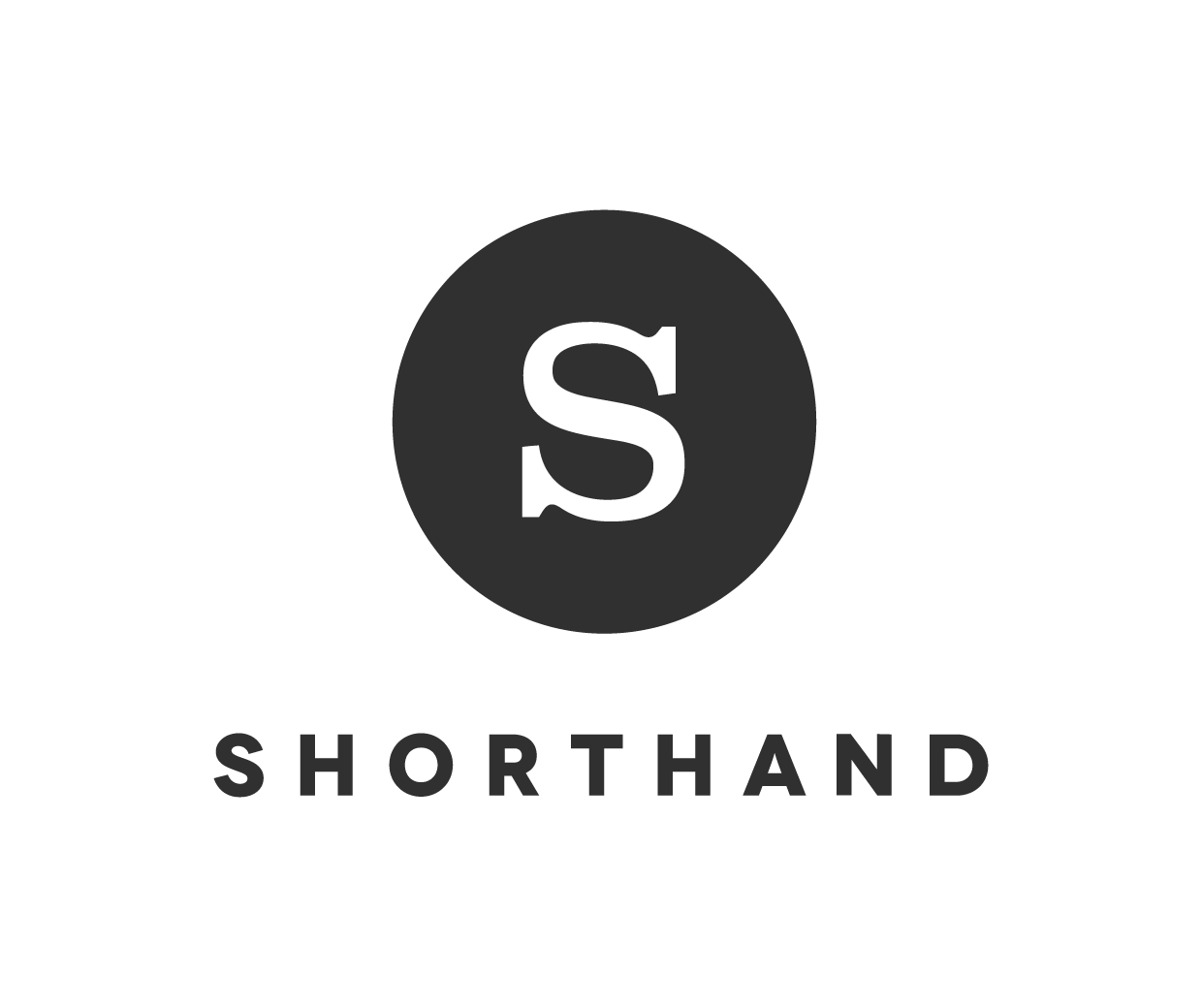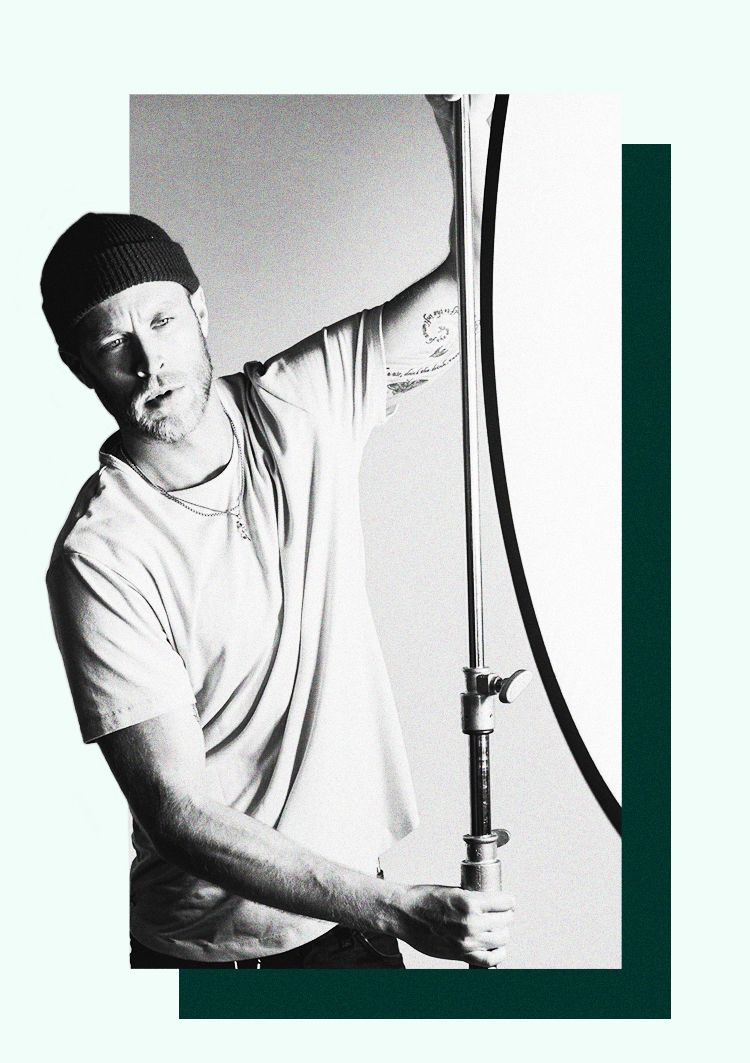8 brilliant brand publishing examples (and why they work so well)

Kimberlee Meier outlines the three principles of great brand publishing, sharing eight examples of brands ticking all the boxes.
by Kimberlee Meier
by Kimberlee Meier
The best brands don’t survive by just selling products. Or publishing blog posts. Or sharing on social media.
Nope. They survive (and thrive) by telling stories that create long-lasting relationships with their audience.
In marketing terms, this content strategy is better known as brand publishing — where brands use owned media to tell their story, their way. Here’s why you should be using it, and how eight brands are doing it right.
We’ll cover:
The three principles of good brand publishing

Creating authentic content that resonates with your audience requires more than just good writing. The best examples of brand publishing tell stories, are grounded in originality, and position themselves as doing something a little different.
Here are three boxes good brand publishing always ticks:
1. Audience targeting
First and foremost, understanding who you are talking to is crucial. If you don’t know what your audience’s interests and pain points are, it’s impossible to create content they will read. Ask yourself, what challenges are they facing right now? What are the goals they want to achieve? And most importantly, what can they learn from you?
Crafting content around these answers helps a brand not only be more engaging but also more valuable.
2. Authentic storytelling
People connect with stories, not sales pitches. What sets good and great brand publishing apart is being genuine and transparent. The best brands know if they share behind-the-scenes stories, their triumphs and yes — their failures — it will humanise them to their audience.
Authentic stories are the best way to build trust and loyalty.
3. Consistent quality
Consistency isn't just about publishing often, it's about maintaining a high standard with every piece of content you create. Imagine if your favorite TV show released a new season and the quality of the filming or storytelling was different from episode to episode. You'd stop watching, right? The same goes for a brand’s content.
Consistently high-quality content builds trust and keeps your audience coming back for more.
The brands below consistently raise the bar of what great storytelling means. Let’s take a look at their latest brand publishing efforts.
RELX
RELX is a multinational information and analytics company that helps companies get deeper customer insights. It's an unlikely contender to have a strong branding narrative, yet it regularly publishes deep-dive content pieces on subjects directly tied to its target audience.
In a recent article, "The Cost of Catfishing", RELX looked at the financial and emotional toll of online romance scams. It used real-life victim stories, expert insights and its own data to talk about a socially relevant issue in an authentic way. It's a great example of tying a target audience to a brand's product.
RELX' brand publishing has something a lot of other websites don’t — cold, hard data. It can make content pieces like this one stand out by connecting data with real stories to give its readers a well-rounded assessment of a topic.


The Red Bulletin
We don’t need to tell you how Red Bull's brand marketing strategy put it on the map. The Red Bulletin, its monthly magazine, goes beyond promoting energy drinks by diving into the world of adventure, sports, and culture. However, not every piece is about extreme sports or someone base jumping off a cliff.
A recent profile looked at iiTzTimmy, a streamer who became popular with fans for his gaming skills and personality. It uses original comic strips to tell the story of the streamer, who has seen his career rapidly progress in the past five years using unique challenges and a very devoted fanbase.
By spotlighting Timmy, The Red Bulletin is connecting with a younger, gaming-centric audience and showing it is there to showcase talent wherever it’s found.
In 2019, then Chief Executive of Red Bull Media Network Gerrit Meier said:
“We don’t believe in traditional marketing; we don’t do big television commercials, we’ve never done that. We believe that we can activate through events and great content, and that’s where we’d rather spend our money. So doing that and having brand relevance absolutely still drives the core business. But we also now do a lot of things where you’re like, ‘wow, that has nothing to do with the brand’, but it still really makes good content.”
“We also now do a lot of things where you’re like, ‘wow, that has nothing to do with the brand’...”

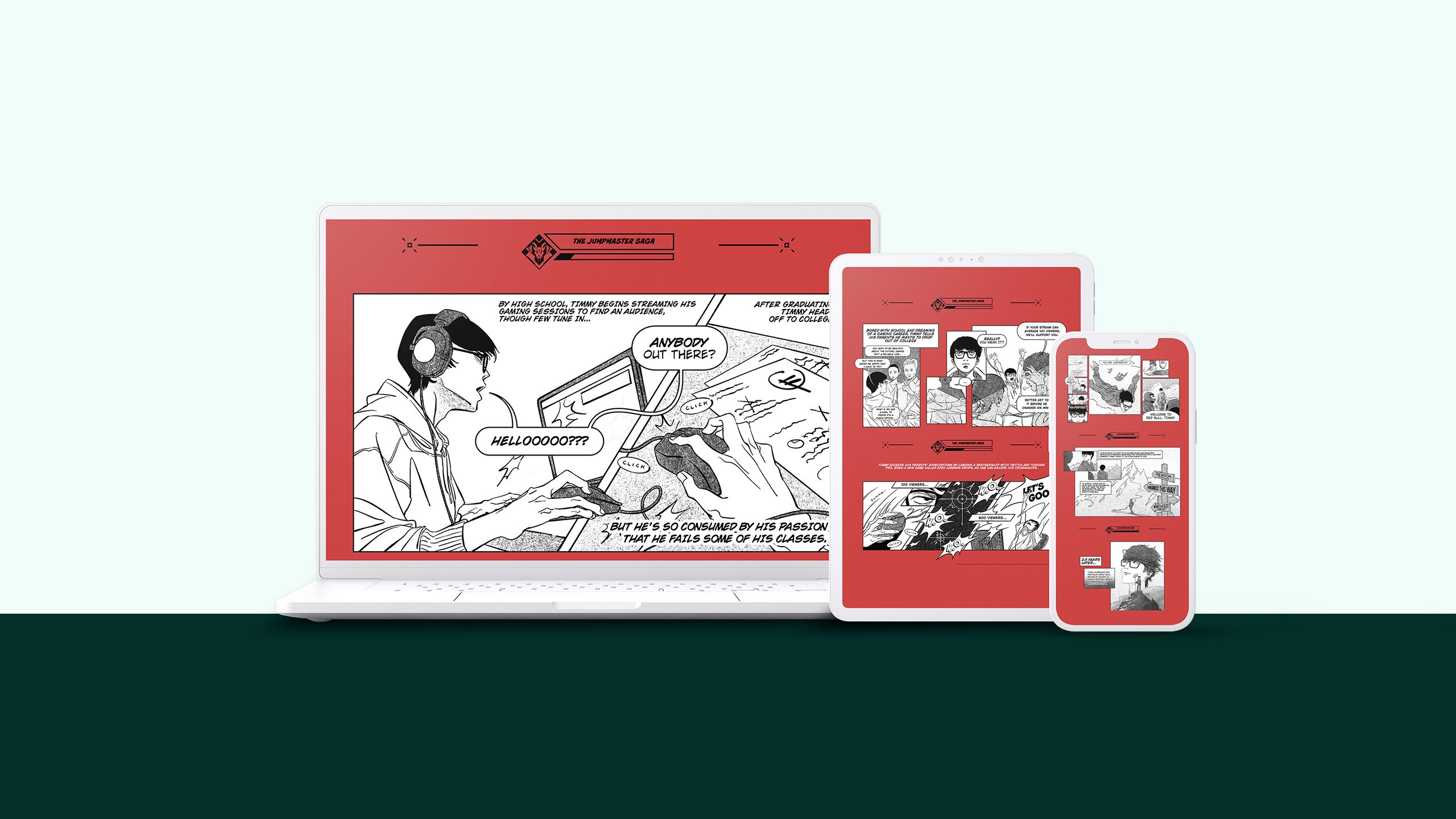
Outlier
Dovetail is an Australian software provider that allows users to collect summarised insights from research analysis.
A couple of years ago, it launched Outlier, a digital publication that discusses all things product design. It’s more than just a digital magazine — it tells stories of artists, designers, and content creators through written articles and illustrations. Video content and in-person interviews are also embedded within these pieces to give deeper insights to the reader.
Outlier works because it aligns perfectly with Dovetail's brand values by connecting with its audience over visually appealing design. This approach not only enhances brand loyalty but also helps build trust in Dovetail’s product as something of a must-have for designers.
Here’s how Senior Brand Marketing Manager Sean Bruce describes Dovetail’s strategy:
“You have to kind of approach it like a media company, which means that you have to pay for good writing. You do have to have a team that is editorially driven, perhaps more so than traditionally marketing driven, because they have to have a nose for good stories. They need to know how to produce good stories. And that's not necessarily a skill set that every marketing team has.”
“They need to know how to produce good stories. And that's not necessarily a skill set that every marketing team has.”
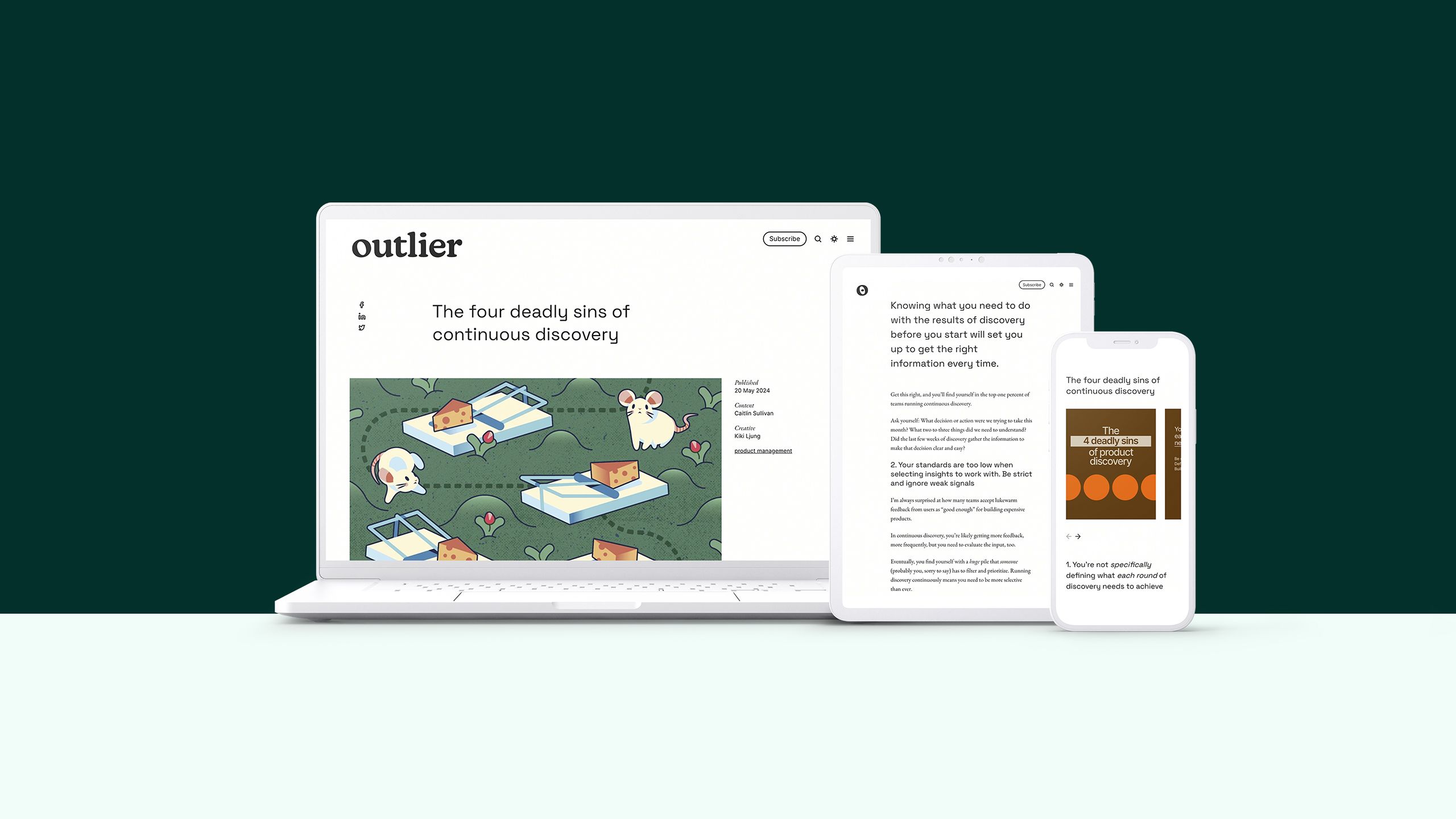

Portico
University College London has a knack for taking boring, complex subjects and turning them into engaging pieces of content for its target audience.
In a recent piece titled "Living and Learning", UCL’s Portico magazine took a deep dive into the dynamic relationship between students' living environments and their educational experiences on campus. What's unique about this is it shows its target audience — future students — it commits to their wellbeing and overall experience when they attend the university. Using visual formats like historical photographs and stories from real-life students, it paints a realistic picture of what students can expect by enrolling at UCL.
Other Universities can take a leaf out of UCL’s book and celebrate diversity to draw in future students.
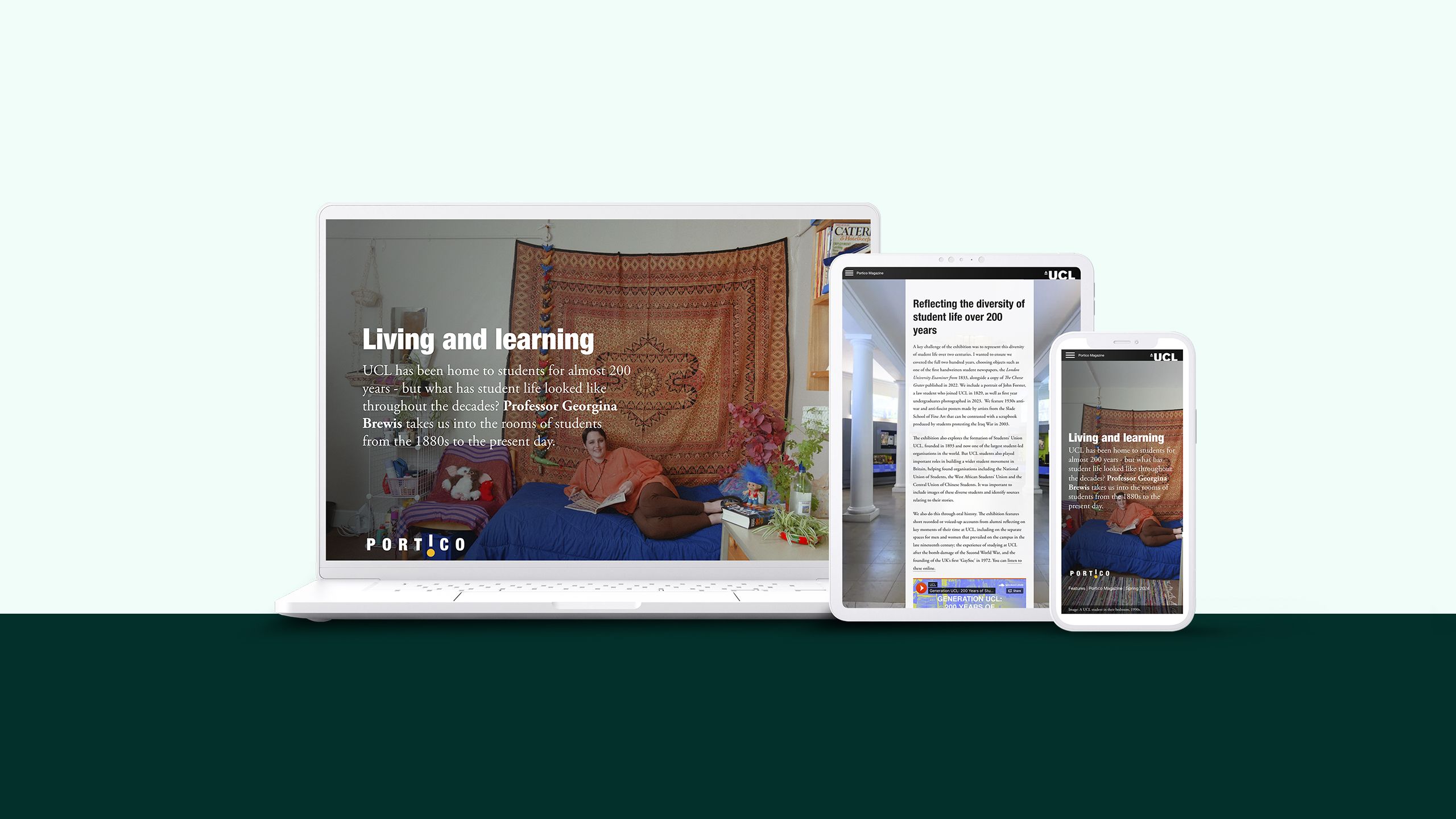

University of Queensland
The University of Queensland (UQ) takes brand publishing to another level from an educational stance. Its magazine, Contact, regularly publishes thought-provoking articles about everything from Bridgerton to music festivals to connect with readers.
Recently, writer Rachel Westbury penned an article titled “Itching for truth: why are some people mosquito magnets?” which looked at why mosquitoes prefer certain individuals. By interviewing a professor from UQ’s School of the Environment, the article looked at an interesting topic with a fresh perspective while at the same time, giving the university some serious credibility.
Stories like these are a masterclass from UQ on positioning the university as an authoritative yet informative source for information.


WePresent
Most of us know WeTransfer as a platform to share content and large files. However, it has built out an entire brand publishing platform called WePresent, where it showcases the work of artists, writers, photographers, musicians, and other creatives.
In a recent piece, WePresent took a personal look into the work of Tina Tona, an artist who uses collage to explore her dual identities. It uses visual storytelling elements like scrollytelling, scrapbooking, illustrations, and snippets of an interview with Tona.
This story is an excellent example of branded content as it showcases Tona’s artistic journey yet aligns with WeTransfer’s creative ethos. It also proves WePresent isn’t just another blog — it’s a storytelling source that elevates creative voices and connects them with its target demographic. In a recent interview, Holly Fraser, VP of Content at WeTransfer and WePresent, said “We work to highlight artists and creators from all over the world, mirroring the fact that WeTransfer is a brand with a global user base.
“The ultimate goal for us is to create the best, most interesting, exciting, representative, and impactful work that we can do whilst respecting an artist’s vision and allowing them to get their message out through WeTransfer.”
“The ultimate goal for us is to create the best, most interesting, exciting, representative, and impactful work that we can do…”


Tablespoon
General Mills’ Tablespoon is a site that combines recipes and lifestyle tips for its readers. The competition for recipe sites online is intense, but the brand has found a way to stand out with its unique take on popular recipes.
A recent article took a cheeky look at “Best Restaurant Copycat Recipes”, where readers got the scoop on replica recipes from popular well-known restaurants. It's not as visually appealing as some of the other brand publishing examples on our list, but it does tick two (very) important boxes: it provides authentic and consistent content that aligns with its audience's interests.


SAIC
The last brand on our list is SAIC Magazine, the publishing arm of the School of the Art Institute of Chicago. The magazine showcases a vibrant mix of artists, designers, and curators to highlight the rich history of the school and its wider contributions to the art world.
A recent example of the magazine celebrating its own talent was its piece on Steph Krim’s Good Things Vending. It talked about college alum Krim's project of plotting vending machines filled with handmade art items around Chicago. Instead of traditional snacks, people can access things like greeting cards, 3D prints, paper puppets, and various other items from nearly 200 artists.
This article is an example of the content marketing SAIC excels at: it shows artists it will support them and celebrate their work, even after graduation.
The moral of the story with brand publishing is: it doesn’t matter how you deliver your content or what the content looks like. Just make sure it’s authentic, consistent and ultimately valuable for your audience. It’s the only way to truly stand out in an increasingly crowded digital world.


